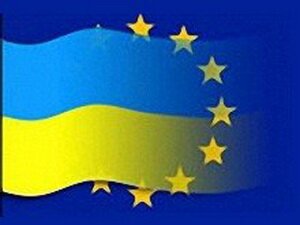
Energy Community was founded in 2006 with the aim of structuring the European power primarily because of the processes of integration of energy systems of south-eastern and eastern Europe, which is understandable in the conditions of a single European energy market. Having joined the Energy Community on the 1st of February this year, Ukraine marked the second anniversary of its membership, which was the basis for summarizing its two-year activity.
By the way, the work of the Society itself was meant to work for 10 years. It brings together regional markets with the population of 73 million people and suggests that member-states should coordinate their legal and regulatory framework with the demands of the EU standards and then will create conditions for the unification of energy markets across the region. As for Ukraine, apart from the so-called outer activity, it will carry out “inner” work: will set high technical standards, modern rules of regulation, will introduce competition to the domestic market, and will see to investments. As a result, the Ukrainian energy sector will sooner integrate into the EU energy system, will have a more reliable security, and will get technical assistance and international loans. Ukraine's joining the Community suggests introduction of a number of special directives and regulations, which are supposed to modernize national Law in the energy branch, coordinate it with the EU legal framework.
To the second anniversary of Ukraine’s membership in the Energy Community is dedicated the research of “Dixie Group" public organization, entitled "Ukraine and the Energy Community: Two Years of Waiting." The work was carried out within the framework of the project “Monitoring of Ukraine’s Fulfillment of its Commitments within the Framework of the Energy Community”, which was financed by the “International Renaissance Foundation”. It is enough to recite the contents of the research, published in a special edition, to realize its thoroughness. Here, in particular, there are general comments and key conclusions with recommendations, as well as analysis of the implementation processes and the current situation in the electricity sector in Ukraine. The research has touched upon gas, oil, environment and restoring energy system, etc. A separate point is the question of Ukrainian commitments before the European Energy Community; there is statistics, a list of regulation-juridical acts used in the research. The research contains general comments on Ukraine's implementation of its commitments in 2012.
In a word, there is no doubt about the seriousness of this analysis and the objectiveness and professionalism of the authors of the studies. For example, the Head of Energy Programs of "Borysfen Intel" Serhiy Dyachenko in this work gives a brief analysis of Ukraine’s fulfillment of its commitments as to the implementation of the European electricity Law specified in the Protocol "On Ukraine's Joining the Agreement on Foundation of the Energy Community."
See the text of S. Dyachenko’s article bellow.
Ukraine's joining the Energy Community in 2011, created a potential for complex market reforms in the energy sector, aiming at its integration into the European energy space. Unfortunately, Ukraine is not using these abilities in a proper way, and the measures it does take, are up to the European standards only in their form, not contest.
This, in particular, is confirmed by the analysis of Ukraine’s fulfillment of its commitments as to the implementation of the European electricity legislation, specified in the Protocol "On Ukraine’s Joining the Agreement on the Foundation of the Energy Community."
From this point of view, the key legislation acts of the EU are as follows:

|
| Ukraine in the the Energy Community |
1. Directive 2003/54/EC determines the EU countries’ commitments concerning deregulation and liberalization of electric energy sector.
Since the 6th of June, 2012, in Verkhovna Rada (Parliament) of Ukraine there has been sitting the draft Law “On Principles of Functioning of the Electricity Market of Ukraine”, presented by MP I.M. Hlushchenko. According to the authors of the draft law, the aim of the adoption of this Law is liberalization of the wholesale electricity market of Ukraine and creation of effective competitive environment at the electricity market. The draft law considers the main demands of the EU Law. On the 20th of November Verkhovna Rada adopted the draft law in the first reading.
On the 21st of June, 2012, the Law of Ukraine "On Amendments to the Law of Ukraine" On natural monopolies ", which introduced appropriate changes in order to ensure abilities of turning to stimulating regulation of natural monopolies. The law was needed for the entry into force of NERC decision "On Approval of Methodology of Forming the Necessary Income of Licensees from Transporting Electricity through Local Electric Networks and Electricity Tariffs”.
2. Directive 2001/77/EC of the European Parliament and the Council "On Creation of Favorable Conditions for Selling Electricity, Generated from Renewable Sources at the Domestic Market of Electric Energy".
On the 25th of September the Law of Ukraine "On Introducing Amendments to the Some Laws of Ukraine Concerning Establishment of a “Green” Tariff”.
June 3, 2011, the Law of Ukraine "On Amendments to the Law of Ukraine" On Electric Energy System” about the task of the state to stimulate using alternative energy sources.
June 17, 2011, the Law of Ukraine "On Amendments to Article 17-1 of the Law of Ukraine “On Electric Energy System” as to stimulating production of electric energy from alternative sources” was adopted.
On the 20th of November 2012, the Law “On the Amendments to Some Legislation Acts of Ukraine Concerning Stimulation of Generating Electric from Bio-Gas”.
On the 28th of April 2011 was presented a draft Law of Ukraine “On Amendments to Some Legislation Acts of Ukraine Concerning Restoring Energy Sources” (registration № 8455), aiming at simplifying the permission system in electric power production from alternative sources. On the 22nd of May 2012, the draft law was adopted in the first reading.
In general, in Ukraine there has been created one of the best systems of stimulating the development of the “green” energy system. Despite this, investors complain about some principles of law in this branch, especially this regards to the so-called “local component”.
3. Regulation 1228/2003 of 26 June 2003, concerning access to the trans-border transmission of electricity. According to press, the draft Law of Ukraine "On Amendments to the Law of Ukraine" On Electric Energy System "aiming at implementation regulations, is being worked on and approved by the executive power bodies.
4. 2005/89/EU Directive of the European Parliament and the Council "On Measures, Ensuring Uninterrupted Power Supply and Investment into the Infrastructure”. On the 5th of November 2012 the Law “On Amendments to the Law of Ukraine “On Electric Energy System” was adopted to ensure a reliable electricity supply to consumers and investments into the infrastructure.
5. Directive 2001/80/EU of the European Parliament and the Council "On Limitation of Emissions of Some Pollutants by Large Burning Plants”. Regulations of the Directive are included in regulatory-legislative acts. For example, in the Order of Ministry of Environment and Natural Resources “ On Adoption of New Technological Standards for Permissible Emissions of Pollutants from Thermal Power Plants, the Nominal Thermal Capacities of Which Exceed 50 MWt” № 541 from 22nd of October 2008. This order establishes standards of emissions and suggests reaching by 2016 the EU standards of emissions of pollutants by thermal power plants.
The Order of Ministry of Environment and Natural Resources dated 17thof December 2012, № 659 “On Adoption of the Basic Plan of Adaptation of Ecology Laws of Ukraine to those of the European Union (Basic Plan of Approximation)”. In particular, it determines tasks for the development of the legislative and regulatory base according to the demands of the Directive, as well as creation of the system of monitoring its implementation.

|
|
ATSOI, BALTSO, ETSO, NORDEL, UCTE and UKTSOA, united in the ENTSO-E. http://ru.wikipedia.org/wiki/ENTSO-E |
It should also be noted that though formally not fixed, an important condition for integration of the Ukrainian energy system into the European one is its transfer to working parallel with the ENTSO-E. At present Ukraine, Moldova and Romania are discussing a project “Study of the Abilities for Synchronic Unification of the Ukrainian and Moldovan Energy Systems with the Continental European Energy System ENTSO-E”. According to available information, the European Commission has decided to support and finance this project.
The Ministry of Energy and Coal is developing a “State Special-Purpose Program of Integration of the Ukrainian Energy System into the Energy Union of Energy Systems of European Countries”.
So, we may speak about a certain progress in the implementation of the European Energy Law. But at this, it should be noted, that the offered legislation acts sometimes deform the principles of the European approach to market reforms.
First of all this concerns the wholesale electric energy market. The main principle of the offered reforms is transfer to the model of bilateral contracts. It suggests that consumers may freely choose a supplier and/or producer of electricity. But in the situation when after the 2011-2012 privatization, 86 % of electric energy is produced by 2 companies - DTEK and “Energoatom”, this choice will be extremely limited.
Among the proposed mechanisms of the functioning of the market themselves, there are some that actually undermine liberal and competitive advantages of the new model. Like the mechanisms of redistribution of money at the electric energy market via the Fund of Distribution of the Сost Imbalance.
It is clear that there is a problem of differences of the costs of the electric energy produced by different types of generation. But it is supposed to be solved in a very non-transparent way. What volumes of income of nuclear power stations and hydro-electric stations will be withdrawn and distributed and according to what principles this will be done, is not clear. This creates potential abilities for misuses and corruption.
The independent status of NERC also remains very doubtful. Subordination of the Commission to the President of Ukraine in 2011 did not strengthen its independence, but made it more vulnerable to political influences.
It is also not clear how the demands of the Directive 2001/80 EU are supposed to be realized. It is already obvious, that within the determined by it time limits (by January 2018) Ukraine will not have modernized all its thermo-electric power stations and this problem needs an individual plan of actions.





